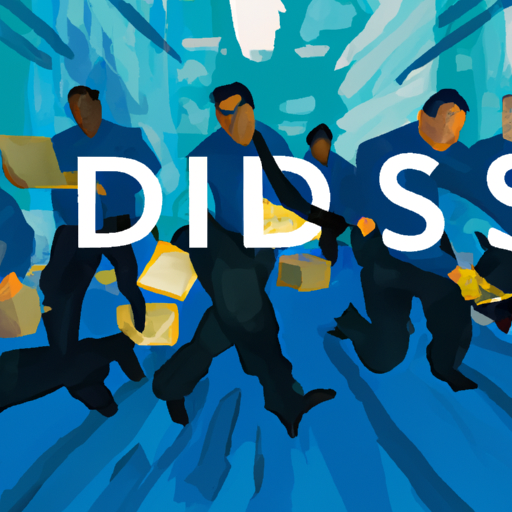The CTO is responsible for overseeing technology systems and strategies, aligning them with company goals and measuring success through metrics.
They play a critical role in driving innovation and managing progressevolving while effectively communicating with stakeholders.
In today’s rapidly evolving technology landscape, the role of a CTO has become increasingly crucial for organizations striving to remain.ahead of the curve.
From executing strategic initiatives to delivering tangible results, the Chief Technology Officer plays a critical role in driving innovation and ensuring the success of technology efforts.
This article examines the key responsibilities of a Chief Technology Officer, exploring their role in executing strategies, measuringsuccess, navigating challenges and driving innovation.
By understanding the multifaceted nature of this role, organizations can harness the full potential of their technology leader and propel themselves toward a prosperous future.
1.“Understanding the Key Responsibilities of a Chief Technology Officer”
The role of a Chief Technology Officer is a crucial one within any organization as it involves overseeing the implementation and management of technology systems and strategies.-and effectively carry out these responsibilities, it is essential that the CTO clearly understands their key responsibilities.
One of the primary responsibilities of a CTO is to develop and implement a technology strategy thataligns with overall business goals and objectives.
This involves understanding the organization’s needs and requirements, as well as staying abreast of the latest technology advances and trends.
By having a comprehensive understanding of the organization’s goals and available technology options, the CTO can make decisionsand informed recommendations regarding the technology infrastructure.
Another key responsibility of a CTO is to oversee the execution and implementation of technology projects.
This includes managing the project schedule, budget and resources, such asand ensuring that the project is delivered on time and within scope. The Chief Technology Officer is responsible for coordinating with various stakeholders,
2.“From the strategyto implementation, how a CTO drives execution”
In today’s fast-paced and ever-evolving business landscape, the role of a CTO has become increasingly critical.
Not only are they responsible for developing and implementing technology strategies, but they also play a crucial role in driving the execution of those strategies to achieve tangible results.
One of the key responsibilities of a CTO.is to bridge the gap between strategy and implementation. They must effectively translate the organization’s technology goals and objectives into actionable plans that can be executed by the technology team.
This requires a deep understanding of the company’s overall strategy, as well as the ability toalign technology initiatives with broader company goals.
To drive execution, a CTO must have strong leadership and project management skills. They must be able to communicateeffectively convey the technology vision to the team, ensuring everyone is aligned and working toward a common goal.
This involves setting clear expectations, setting milestones, and providing the resources and support necessary to achieve success.
3.“Measuring Success The metrics and KPIs that define a CTO’s results”
In the fast-paced world of technology, it is critical for organizations to clearly understand the impact thattheir technology investments have.
This is where metrics and key performance indicators (KPIs) come into play. For a chief technology officer, these metrics and KPIs serve as a vital tool to measure success and demonstrate the value they bring to the organization.
One of the key metrics that defines the results of a CTO is the successful implementation of technology projects. It is important for a CTO to track these metrics to ensure that technology initiatives are executed effectively andefficient.
By consistently delivering successful projects, a chief technology officer demonstrates his ability to drive results and achieve organizational goals.
4.“Navigating Challenges A Chief Technology Officer’s Role in Overcoming Obstacles”
Inrapidly evolving technology landscape, the role of a CTO is crucial to ensure an organization stays ahead of the curve and achieves its goals. However, this role is not without its challenges.
A CTO must possess the skills and expertiseto push through obstacles that may arise, ultimately leading the team to success.
One of the key challenges facing a chief technology officer is managing ever-changing technological advances and trends.with technology evolving at an unprecedented pace, it can be overwhelming to keep up with the latest tools, platforms, and methodologies.
The Chief Technology Officer must constantly assess the technology landscape, identify emerging trends, and determine their relevance to the organization’s goals.This requires a deep understanding of the company’s needs and the ability to make informed decisions about technology adoption and implementation.
Another significant challenge is managing stakeholder expectations and requirements.As a bridgebetween the technical team and senior management, the head of technology must effectively communicate the complexities of technology to the non-technical
5.“Driving Innovation How a Head of TechnologyShapes the Future of an Organization”
In today’s rapidly evolving technology landscape, driving innovation has become an essential aspect of a CTO’s role.
This role goes beyond simply executing tasks and managing teams;involves shaping the future of an organization by harnessing the power of technology to create new opportunities and stay ahead of the competition.
One of the primary responsibilities of a CTO is to identify and evaluate technologies that can improve operations,products or services of the organization.
By being aware of the latest trends and advances, they can assess the potential impact and feasibility of implementing these technologies within the organization.
This proactive approach allows them to drive innovation by introducing new tools, systems or processes that can revolutionizehow the organization works.
Furthermore, a CTO plays a crucial role in fostering a culture of innovation within the organization. They must create an environment where creativity and out-of-the-box thinking are encouragedand where employees feel empowered to take risks and experiment with new ideas.
By fostering a.From understanding key responsibilities to addressing challenges and driving innovation, this position plays a critical role in ensuring effective execution and delivering tangible results.
By aligning strategy with implementation, establishing measurable metrics and KPIs, and overcoming obstacles, a Chiefof technology can lead the organization to achieve its goals.
In addition, by driving innovation and shaping the future, they can position the organization for long-term growth and competitiveness. Finally, a skilled and visionary chief technology officer is essential to transform technologyto a strategic advantage and to lead the organization to success.
…






